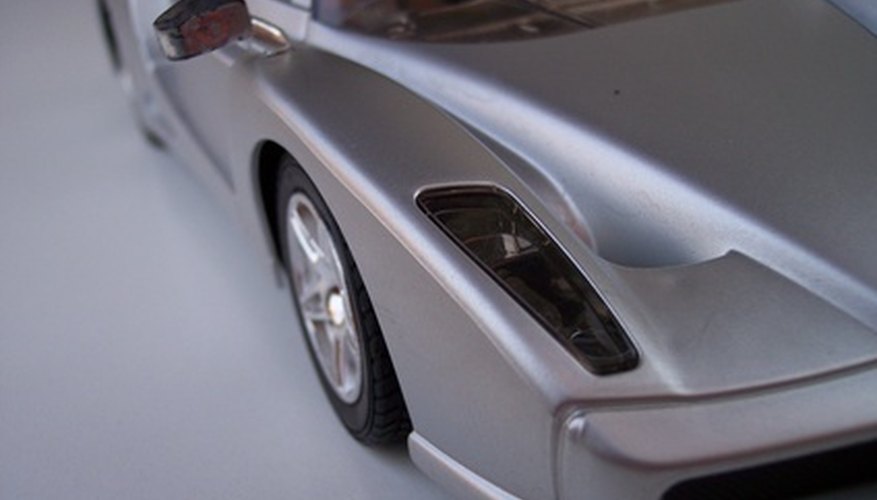Polyurethane paint provides a hard, durable gloss for crafts and model making and can be applied to almost any surface. There are several types of polyurethane paints, and several ways to apply them. The size of the project and the expected use will determine the best type of finish and method of application. You can choose from a simple spray can, to an extremely durable and high-gloss, two-part polyurethane paint.
Identification
Polyurethane paints are most commonly used for crafts. The finish will be very thick, hard and glossy, much like an automobile finish. They are also frequently used for boats and marine applications.
Features
Polyurethane is a plastic-based resin, and is used to manufacture anything from furniture to baby toys. Depending on the formula, it can be rigid to make patio furniture, or liquid for paints and varnishes. In paint, it's available in satin, semigloss and high-gloss finishes. It can be applied to most types of plastic, fibreglass, wood, metal and fabrics. The most valuable feature of polyurethane paints, apart from a flawless, glossy finish, is resistance to water and chemicals, including gasoline. This makes it ideal for model making. It is high in solids, making it slow to dry, but creating a thick, durable film.
- Polyurethane is a plastic-based resin, and is used to manufacture anything from furniture to baby toys.
- Depending on the formula, it can be rigid to make patio furniture, or liquid for paints and varnishes.
Types
Polyurethane is available as a clear topcoat or in many solid colours. Most hobby shops sell polyurethane paints in spray cans, already mixed and ready to use. For larger projects, a two-part finish can be mixed up. This requires some care, because if the finish and the drying catalyst are mixed incorrectly, the resultant finish could bubble and crack with use.
For painting fabric, like model aeroplanes, a more flexible and slightly thinner polyurethane formulated specifically for its flexibility is a good choice. Polyurethane finishes are usually applied with a spray gun or spray can, although some formulas can be brushed. While polyurethane paints are not used for house painting, clear polyurethane finishes are commonly used for woodwork, floors and furniture.
- Polyurethane is available as a clear topcoat or in many solid colours.
- Polyurethane finishes are usually applied with a spray gun or spray can, although some formulas can be brushed.
Considerations
As with most finishes, the best method of application is in several thin coats instead of one or two heavy coats. Since polyurethanes are hard and glossy, they will show every surface imperfection, so starting with a very clean, smooth surface is essential, as is sanding between each coat. Follow label directions for application methods and drying time.
Warning
Use adequate ventilation when working with polyurethane paints because the solvent fumes are very strong. If proper ventilation is impractical, use a canister-style respirator. Don't rely on a paper or fabric mask because these will not filter the harmful fumes. Never use these paints near exposed flame or furnaces because they are extremely flammable. Wear proper eye protection, and avoid prolonged skin contact.
- Use adequate ventilation when working with polyurethane paints because the solvent fumes are very strong.
